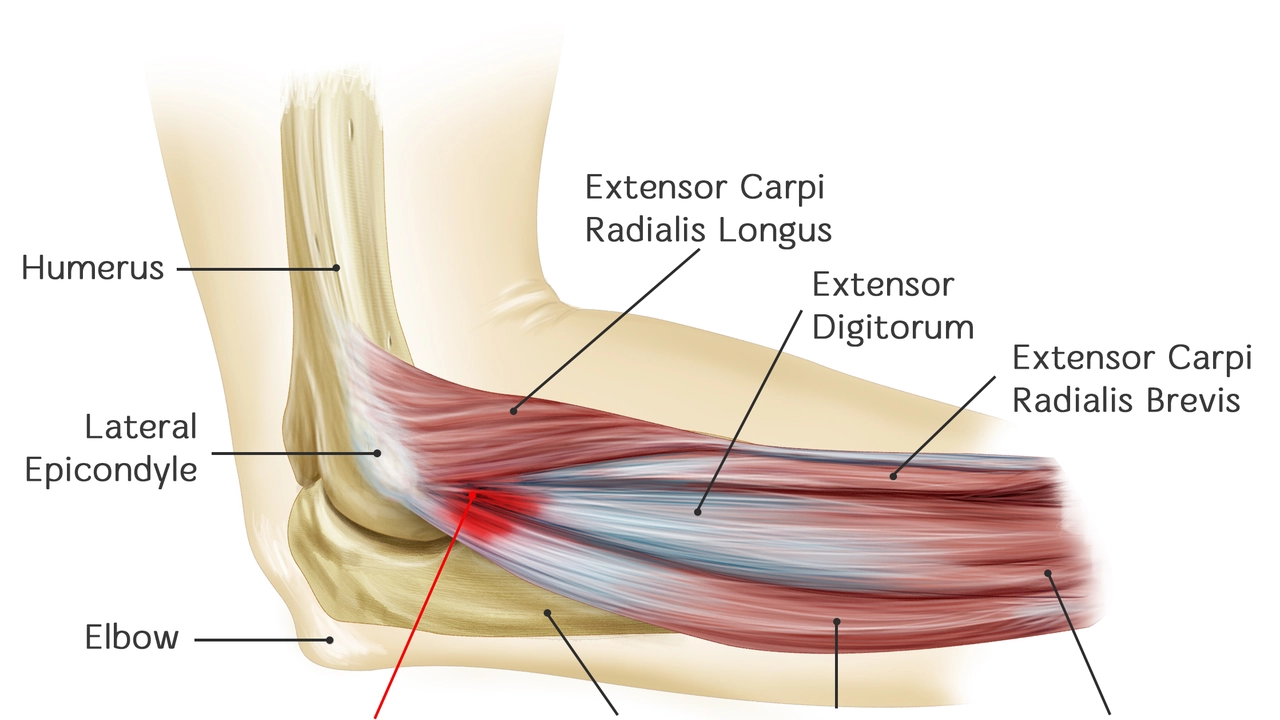Understanding the Nature of Tennis Elbow
First things first, let's spill the beans on what the fuss about tennis elbow actually is. It's no secret that tennis elbow, or Lateral Epicondylitis as the medical turtlenecks call it, is a common upper extremity injury. Just to give a quick fyi, it isn’t only suffered by those who swing rackets on the court. It can be a bummer for builders, plumbers, and even if you’re a regular Joe who thought it would be a brilliant idea to do some rigorous gardening during the weekend. What's odd, and I'll need your full attention here, is that the injury is usually to do with the point where the forearm muscles join the bony part on the outside of the elbow.
What's equally curious is that it's predominantly a tendinitis of the outside of the elbow, not on the inside. So, if you're feeling a clutching pain or discomfort on the outer part of your elbow, chances are it's the shenanigans of tennis elbow. The pain might appear subtly or abruptly and it may radiate to your forearm and wrist. Oh, and fun fact, despite its name, athletes aren't slipping and falling over this condition left and right, so you're not alone.
The Culprit: Overuse or Misuse
As to how you landed on this sore elbow situation, it boils down to overuse or misuse of the forearm muscles. To be more specific, repetitive arm movements, heavy lifting or receiving high-energy impact frequently, accelerate the risk. To be honest, it's kind of like what happens when you can’t stop eating your favorite chips in front of the TV, overindulging leads to problems, and in this case, pain and inflammation.
A lot of my blog readers have asked if there's an immediate, knee-jerk solution to it, like an oath or watchword. I am sorry to burst your bubble, but not quite. This condition is like that annoying guest who overstays their welcome. It takes time and patience to get over it.
When Does Tennis Elbow Become Irreversible?
This brings us to a key query—how long can you have tennis elbow before it goes off the cliff and becomes permanent? I wish there was a universal timer to answer this, but it's unfortunately not straightforward. Most medical publications state that if tended to properly, symptoms should resolve within one to two years. But don't panic and drop your coffee yet. That's just in general. Each case can vary immensely.
Moreover, some unfortunate souls may develop a chronic condition, meaning it could be with them for several years, and become irreversible. But worry not, that doesn’t happen for most people, so let's not jump to the worst conclusion just yet. It’s good to be positive, after all. It's not terminal and the condition itself is not life-threatening. So, keep calm and take care of your elbow.
Signs and Symptoms to Keep an Eye On
Since we are on the subject of tennis elbow 'hoodwinking', let's discuss the signs and symptoms. I can hear some of you asking, "Kieran, why should we do that?" Imagine running a mile with an open shoelace, only to trip midway and plant your face on the ground. Wouldn't you avoid that if you knew the lace was open? The same logic applies here.
If you ignore the signs, it might lead to a permanent condition. Common symptoms of tennis elbow include pain or burning on the outer part of your elbow and weak grip strength. The pain is usually worse with forearm activity, like holding a racket, turning a wrench, or shaking hands. Your elbow may also feel stiff, and it might hurt to make a fist.
Preventive Strikes and Therapeutic Knockouts
Prevention is worth a pound of cure, and in case of tennis elbow, it's no different. You can integrate simple exercises in your routine, take frequent breaks during strenuous activities, and ensure that you’re using the right techniques or equipment for activities. Believe me, your elbow will thank you.
As for the therapy knockouts, the mainstay therapeutic maintenance for tennis elbow would include physiotherapy exercises with a sprinkle of non-prescription medications like Ibuprofen to relieve pain, or the usage of braces. The aims here are primarily to reduce pain and inflammation, and improve function. But remember, having a professional physiotherapist guide through the process is always the best idea!
Will Surgery Save the Day?
If none of this works out, you might wonder, "Well, how about surgery, Kieran?" My answer to that is an echoey Yes and No. It's not the first line of treatment, and the decision for surgery depends on a horde of factors. For instance, how severe the injury is, how it's impacting your life and daily routine, et cetera. And just a heads up, majority of people suffering from tennis elbow do not need surgery. But if conservative treatments do not help and pain prevails, a talk with a surgeon could be on the cards.
At the end of the day, the key is to prevent tennis elbow from going rogue and becoming irreversible. So, pay attention to your body and seek help when needed. As for me, I once got the tennis elbow while trying to fix my roof. It took a fair amount of patience, ice packs, exercises, and adjustments in my roofing methodology to finally escape its grasp. Hang in there, friends, it does get better!
Your Silver Lining
‘Patience and Perseverance’ is the motto here. If you're nursing a stubborn tennis elbow, remember that it's rarely permanent and most people recover fully. I know that the journey to recovery can feel like running a marathon with an egg on a spoon, difficult and long! But, as they say, it's a marathon, not a sprint. Your body might need time to recover and that's perfectly okay. So hang tight, keep a positive outlook, and believe in your body's magical power of healing. You'll come out of it stronger.

Write a comment